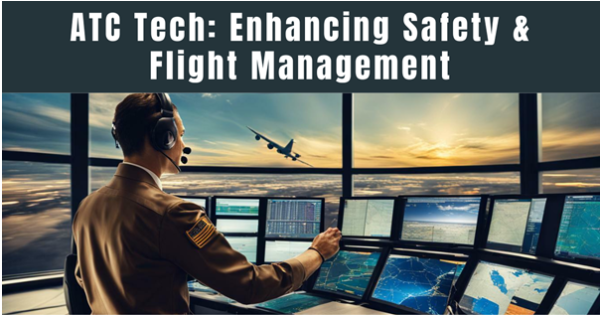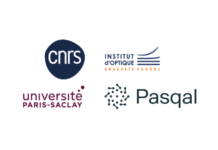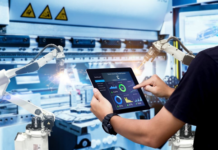
Air traffic control (ATC) is the unseen, but invaluable, force keeping the world aviation system safely and efficiently operating. As air travel grew more extensive and complicated, the technologies used by ATC also developed from primitive visual cues and basic radio communications to a highly sophisticated set of interconnected systems. These technologies are vital in the handling of aircraft flows, from take-off to touchdown and all that is in between.
The main objectives are to avoid collisions among aircraft, coordinate and speed traffic movement, and deliver key information for pilots, along with weather and airport status. This article by Pristine Market Insights explores the primary technologies that boost aviation safety and support real-time flight management, tracing their development, operation, and the future breakthroughs that will shape the skies further.
Evolution of Air Traffic Control
Air traffic control was dependent on manual procedures, such as voice communications between pilots and controllers and the utilisation of primitive radar displays to monitor aircraft locations. Effective in early aviation, these techniques had major limitations, such as limited radar surveillance, dependence on human precision, and slower information processing. With increasing demand for air travel across the world, the number of flights themselves became very high for these conventional systems to handle, and they struggled to ensure safe separation as well as smooth traffic flow.
To address this issue, international governing authorities have been key drivers in promoting the use of advanced technology. These organisations set global standards and safety procedures, which help ensure that air traffic control systems develop in a concerted manner to manage growing traffic levels with the highest safety levels globally.
Surveillance Technologies in Air Traffic Control
Surveillance technologies are the air traffic control’s essential “eyes”, allowing controllers to track and manage aircraft positions in real time. They have developed from conventional radar-based tracking to advanced, satellite-enabled solutions that offer greater accuracy and coverage. Initially, dependent on Primary and Secondary Surveillance Radar, ATC was able to detect and identify planes within a limited terrestrial range. But gaps in radar coverage, over the oceans and remote areas, the creation of more advanced systems for more secure, more efficient airspace management was necessary, particularly as worldwide air traffic continues to grow.
Major Surveillance Technologies and Developments:
- Primary Surveillance Radar: Identifies planes by reflecting radio waves from targets; handy but restrictive, as it can only report range and bearing and not identity or altitude.
- Secondary Surveillance Radar: Improves PSR with a return of detailed information (altitude, identity) from aircraft transponders upon interrogation from the ground, enhancing tracking accuracy.
- Automatic Dependent Surveillance–Broadcast: A system based on GPS in which aircraft automatically send their position, height and speed to ATC and other nearby aircraft.
Benefits: More accurate, less expensive infrastructure costs, and good coverage over remote or oceanic areas.
Global Uses: It is being increasingly mandated across the world, mainly in high-density airspace, to improve safety and efficiency.
Communication Technologies in Air Traffic Control
Clear and dependable communication is the basis of air traffic control, allowing for safe and efficient aircraft management in progressively congested airspace. Historically, analogue systems such as VHF radio were in control of ATC communication. However, ATC communication has developed considerably to accommodate the drawbacks of voice-only procedures. Today, with the advent of digital data link systems, there is a revolution in communication between controllers and pilots. These technologies increase clarity, reduce the radio frequency congestion, and interact with large ATC systems to present a more comprehensive picture of operations. Some new technologies are:
- Very High Frequency Radio:
- Primary voice communication method for decades.
- Direct, real-time communication between pilots and controllers is allowed.
- The shortcomings include frequency congestion, radio intervention and potential misconceptions due to accent or poor signal strength.
2. Controller–Pilot Data Link Communication:
- An electronic, text-based communication system for non-critical messages such as clearance and routine commands.
- The dependence on voice communication decreases, reducing the risk of wrong communication.
- Helps reduce congestion on busy radio frequencies and increases overall efficiency in communication.
3. Integration with Radar and ADS-B:
- CPDLC and other digital solutions are integrated with monitoring systems such as radar and ADS-B.
- This integration improves situational awareness by overlaying communication with real-time aircraft position data.
Automation and Data Processing
While increasing world air traffic depends more and more on the alertness of humans, modern air traffic control systems also depend on sophisticated automation and data processing to ensure safety and efficiency. Today’s ATC is driven by smarter systems that analyse enormous volumes of flight information in real time. These technologies not only minimise human error but also allow controllers to make quicker decisions, detect conflict accurately. From planning routes to averting near misses, automation is now the ATC operation’s brain. Some of the core automation tools are as follows:
- Flight Data Processing Systems:
FDPS automatically processes flight plans, tracks aircraft movements, and anticipates potential conflicts. Ongoingly updated through real-time surveillance and communications data, it offers controllers accurate, actionable information to enable safer and more efficient decision-making at all stages of flight.
2. Minimum Safe Altitude Warning:
MSAW is an automatic alert system that alerts controllers whenever an aircraft lowers below the minimum safe height for its position. It’s particularly important in mountainous or dense regions, avoiding terrain crashes and increasing flight safety on descent.
3. Short-Term Conflict Alert:
Short-Term Conflict Alert is a computerised safety net employed in air traffic control to assist in avoiding mid-air collisions. It continuously scans aircraft paths and detects potential infringement of minimum spacing rules between aircraft likely to arise in the near future, typically within a couple of minutes.
Conclusion
Collaborative decision-making will automate real-time coordination, minimise delay, and maximise resource allocation, whereas issues of cybersecurity and the human-automation balance still require attention for safe and future-proof airspace management. ATC technologies have changed aviation safety and efficiency throughout history with continuous innovation. With the global air traffic control market projected to witness steady growth due to increased air traffic and modernisation, AI, unmanned traffic management, and remote towers will be the set of tools sustaining management of complex airspace and enhancement of real-time flight operations.
















